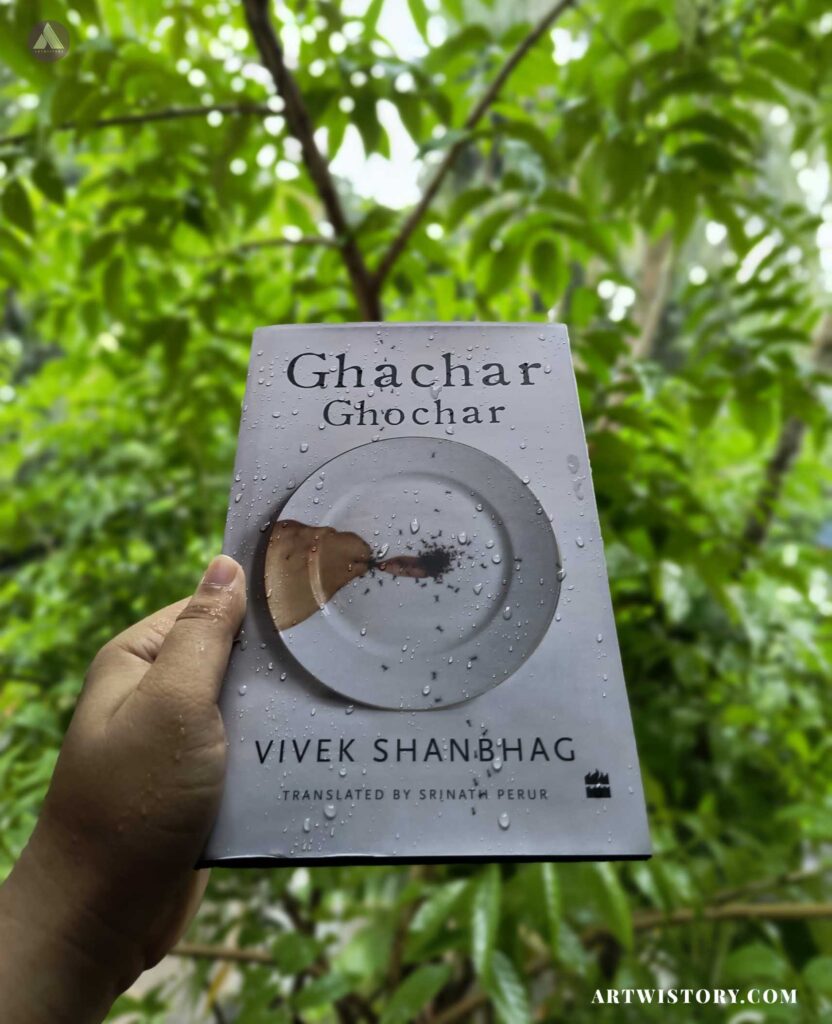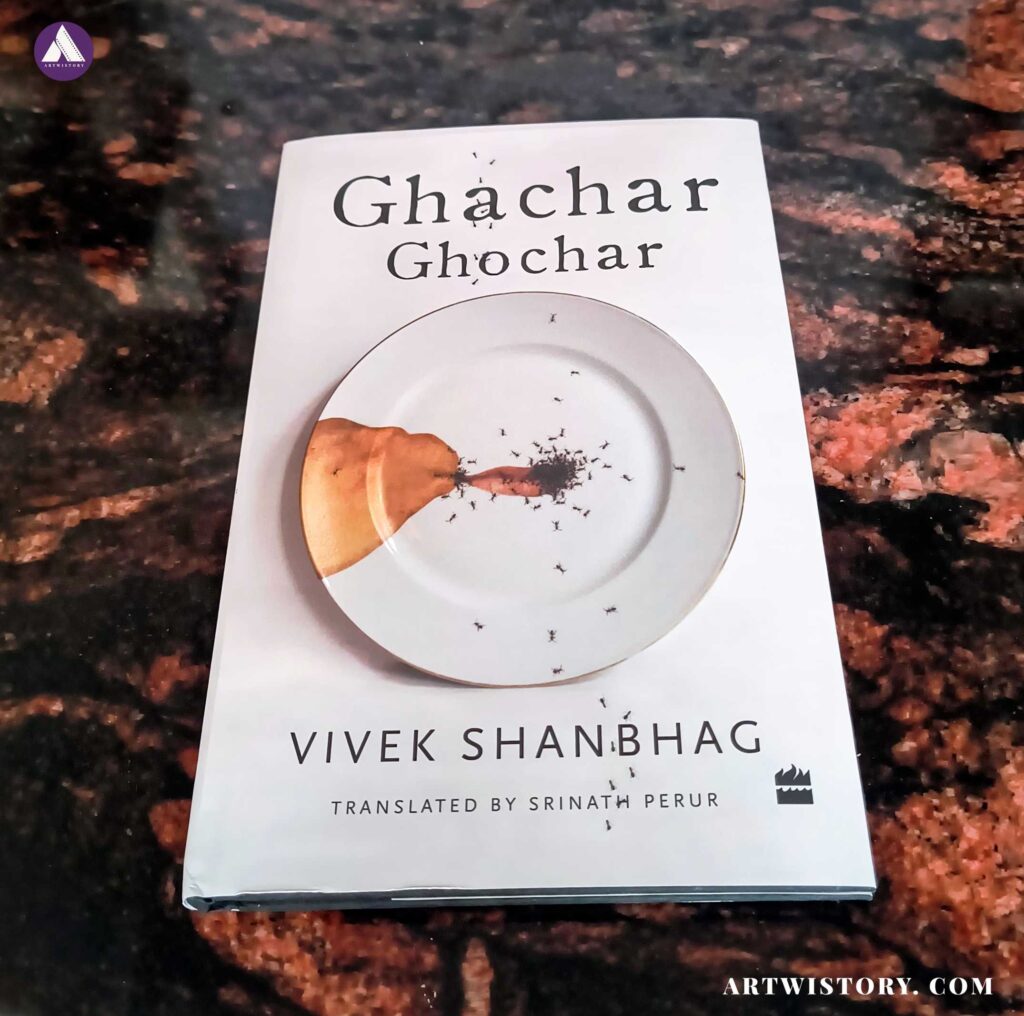I have recently read Ghachar Ghochar, a book by Vivek Shanbhag. I would love to recommend that book in my 100 Pages Read. Here is why:
I come from a nuclear family, and like in every household, clashes are normal. My mother used to say, “When you are not inherently rich and suddenly become rich, you stop valuing money and start behaving like a rich person.” Coming from a middle-class background myself, I understand how we perceive well-off families. We don’t necessarily compare ourselves in terms of money, but we do when it comes to status. This constant struggle for status goes beyond just finances.
Well, this book somehow subtly talks about it—the class struggle. One of the biggest lines that summarises the whole book is from the book:
“Blood will always be thicker than water.”
There isn’t much I can reveal about the plot, since the book is just 110–120 pages long, and even a small spoiler might give too much away. But let me give you a glimpse so you know what you’re stepping into.
The story revolves around the narrator, who spends most of his time in a coffee house. It starts with the description of the coffee house. And for those who are living in Kolkata or West Bengal, believe me—the description feels like it’s the old Coffee House in College Street.
So the narrator describes his family members, who are there and what is their significance in his life. Well, they belong to a very low middle-class family, but due to the circumstances and efforts, their financial condition becomes more stable and good. And he later gets married to a working woman. The narrator of the story is a spoilt brat who once thought of doing something on his own, but is now working in his father’s business—or better to say, just attending and getting the salary. And eventually, the story becomes more complicated.
Vivek Shanbhag’s Ghachar Ghochar is a masterpiece in narrative economy—a deceptively slim novella that carries the weight of an entire family’s psychological and moral decay. Shanbhag’s genius lies in what he leaves unsaid. The reader is drawn into the claustrophobia of their home, where boundaries collapse and hierarchy subtly shifts.
Let’s talk about the characters:
- The Uncle (Chikkappa) – a self-made businessman who becomes the family’s power center.
- The Parents – where the father is still facing difficulties with the new lifestyle, and the mother is trying to adapt to it.
- The sister Malati – bold, yet eventually complicit.
- The narrator’s wife Anita – the moral compass, and specifically the outsider who sees through the family’s hypocrisy. Though everyone is trying to adapt to the new lifestyle, she does the opposite and appears as a contrasting figure (much like the ants shown in the poster).
And that’s all I’ll say about the plot.
Why am I recommending this in 100 Pages Read?
Well, first of all, it’s under 100 pages. The language is incredibly simple—you won’t stumble while reading it. Hats off to the translator, Srinath Perur, for doing such a wonderful job. Despite being short and crisp, the book has a hypnotic pull. At first, it may seem like nothing extraordinary is happening—but that’s exactly why it works. You get entangled in the knots of a seemingly ordinary story that slowly reveals something darker.
And yes—the ending will astonish you.
I know that our attention span has reduced to just hovering over reels. But let’s agree—we need to work on it. Reading this book might seem like a bit of a monotonous start, but I guarantee you will be hooked throughout the story.
Let’s talk about the cover
With all due respect, I disagree with the saying “Don’t judge a book by its cover.” At least when it comes to books, the cover is a part of the story. Want an example? Ghachar Ghochar is a perfect one.
The English-translated edition features a minimalist cover: ants crawling on a plate where tea (or something similar) has been spilled.
I love minimalist cover designs. There’s not much more to say, because if I spill something more, it will ruin the story for you. But I would say the image goes perfectly with the story. The ant becomes a big motif or element in the story, and there is a chapter dedicated to it.
The use of serif fonts for the book name is genius. Serif denotes richness. Designers use serif for brands like Gucci, New York Times, Prada, and Vogue. These brands, which are more elitist in nature, denote luxury. Even though serif is not a modern font type, it is used to denote luxury—and believe it or not, it works.
The use of contrast is commendable too. The ants are black—which makes them appear as outsiders that don’t belong in their surroundings, which are completely white. This white makes the ant stand out in contrast to its environment, again acting as an extension of the story. Whoever designed it—hats off to you. Knowing the design of a cover helps you understand the effort put into it in respect to the story.
Ghachar Ghochar is not just a story about money or family. It is a parable of moral corrosion. It questions the price of stability and the comfort of complicity.
And most importantly—it is around 120 pages.
To buy the book you can click on this links.
HARD BOOK
PAPER BACK
e-BOOK





I too love this book
Loved it